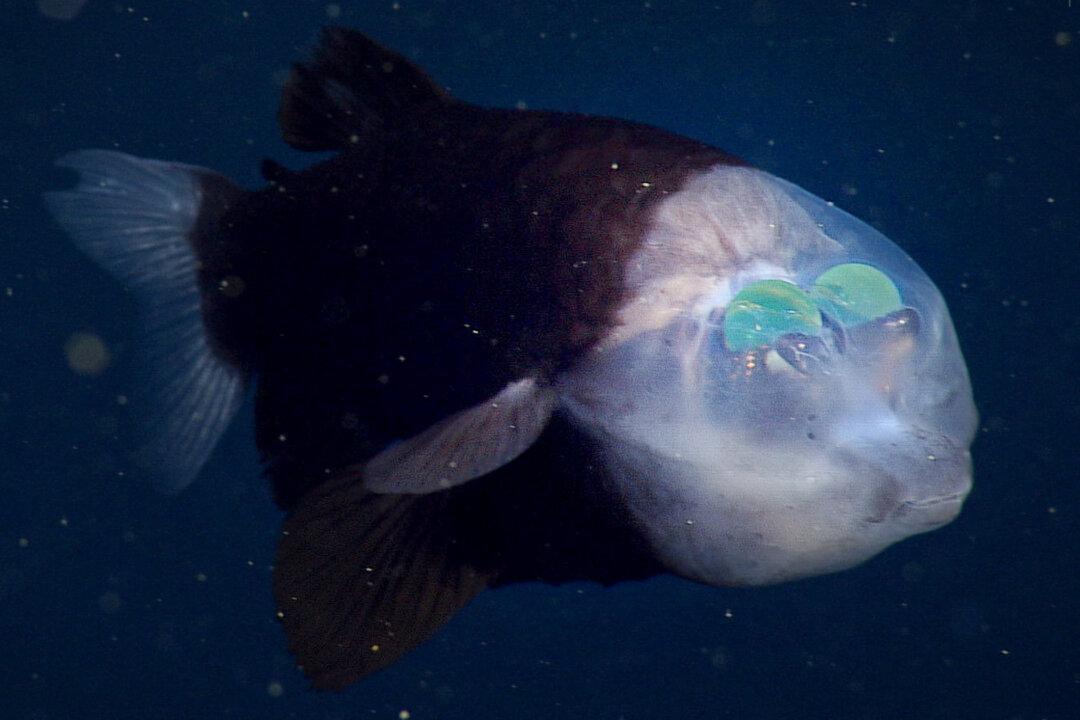While we adapt to shorter, darker days with less sun and more snow, an ultra-rare sea creature well adapted to darkness was recently sighted again.
In the deep sea—some 600 to 800 feet underwater, where sunlight dwindles to near pitch-black—there dwells a fish with unusual features well suited to that extreme environment. Several species of the Opisthoproctidae fish family are aptly dubbed “barreleyes,” because of their elongated, tube-shaped eyes that allow them to make their living in the ocean’s “twilight zone.”






